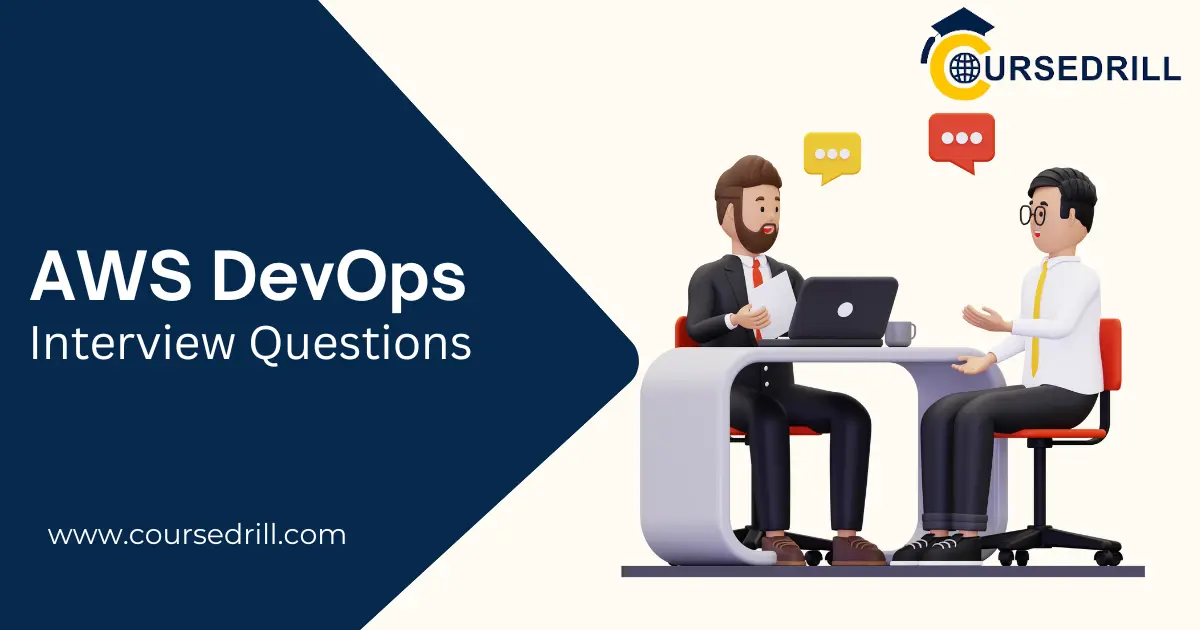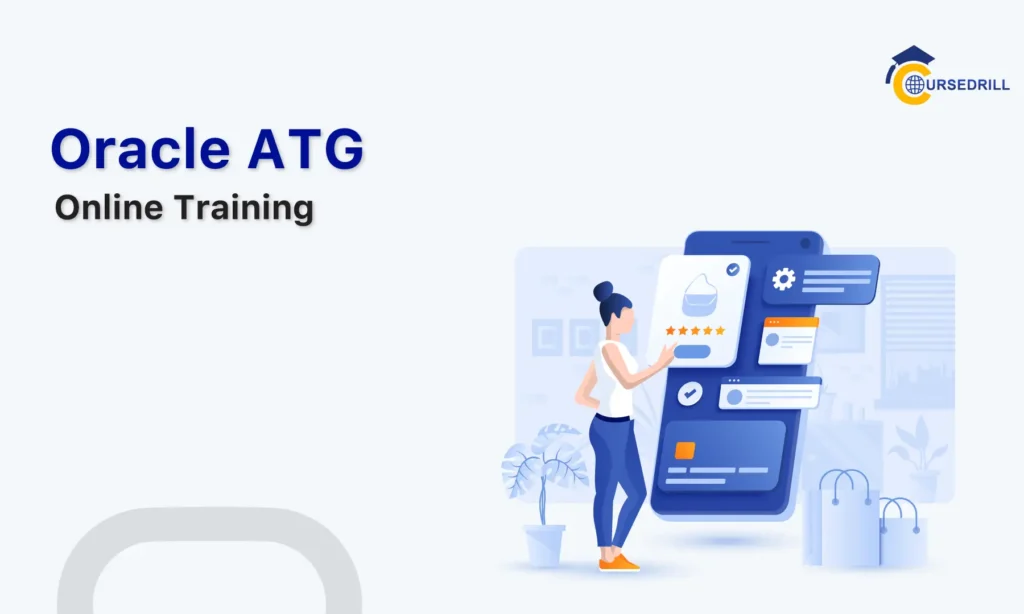- Posted on
- admin
- No Comments
Top 30 AWS DevOps Interview Questions and Answers in 2021
Welcome to the AWS DevOps interview questions blog. As technology is rapidly growing day by day and only aims to grow in the future. DevOps and AWS are the two significantly growing technologies in cloud computing; DevOps is a combination of tools and practices that help enterprises to accelerate the processes of developing and delivering services when compared to the traditional method of software development. In contrast, AWS DevOps is created to implement the DevOps concepts utilizing AWS cloud platform and services and tools.
Here we have gathered a list of AWS DevOps interview questions and answers based on the expert’s advice and suitable for freshers as well as experienced candidates. Preparing these questions will enhance your knowledge and help you crack the interview.
Frequently Asked AWS DevOps Interview Questions and Answers
1. What is AWS DevOps?
AWS DevOps is created for organizations to implement the DevOps concepts with the help of multiple features, services, and tools provided by the cloud platform. The features and services offered by AWS will let the companies speed up the process of software development and delivery. The complicated processes like managing infrastructure, monitoring applications, creating codes of applications, and software release automation are simplified with AWS DevOps.
2. What are the three main parts of cloud computing?
Three main parts of cloud computing are:
- Platform as a Service(PaaS)
- Infrastructure as a Service(IaaS)
- Software as a Service(SaaS)
3. What is Elastic Load Balancing?
AWS provides an Elastic Load Balancing service that automatically shares the incoming application traffic over various Amazon EC2 instances. This not only distributes the traffic but also:
- Identifies the invalid Amazon EC2 instances.
- Automatically balances request handling requests as an acknowledgment to incoming traffic.
4. What is the use of Amazon CloudFront?
Amazon CloudFront is used to deliver static, dynamic, and streaming websites, including additional content. It is one of the fastest content delivery network(CDN) services that securely delivers APIs, videos, applications, and data to global customers with high transfer rates and low tenancy.
5. What is ElastiCache?
ElastiCache is designed to manage the memory cache of the cloud. ElastiCache is a frequently used tool because it enhances the performance of the applications by obtaining the data from low-tenancy and high-throughput in-memory stores of data.
Grab the ever-increasing job opportunities for AWS DevOps professionals
by learning all the industry demanded skills.
Check out our experts designed AWS DevOps training program here.
6. What is AWS CodePipeline?
AWS CodePipeline is a tool that automates the continuous-delivery program code to get accurate and rapid updates. AWS CodePipeline is used to improve the process of development, testing, and deployment of the applications.
7. What is AWS CodeDeploy?
AWS CodeDeploy is a tool that automates the software deployment process to cloud services or local environments like AWS Fargate, AWS Lambda, Amazon EC2, etc. This tool also prevents downtime during the deployment process.
8. Is DevOps a framework or a programming language?
DevOps is neither a programming language nor a framework. It is an innovative mix of both.
9. List the use cases of AWS DevOps?
Five different use cases of AWS DevOps are:
- CI/CD
- Infrastructure automation
- Collaboration and communication
- Infrastructure as Code
- Logging and Monitoring
10. List the core components of DevOps?
The six core components of DevOps are:
- Continuous testing
- Continuous integration
- Continuous feedback
- Continuous development
- Continuous monitoring
- Continuous deployment
11. List the different components in AWS?
The eight-core components of AWS are:
- Storage
- Amazon cluster
- Database
- Network
- Analytics
- Management and security
- Implementation and management
- Application services
12. Why use a buffer?
Buffer is used for managing the balance between multiple components to control speed and offer a faster service. AWS buffer also assures efficient load and traffic.
13. What is an AMI?
An AMI is abbreviated as Amazon Machine Image, which generates a virtual machine in EC2. It acts as a unit of deployment for the services that EC2 delivers.
14. What is one of the biggest OTT platforms that is built on AWS?
“Netflix” infrastructure is built on AWS; it also runs many services simultaneously on AWS Regions.
15.What are the various responsibilities of a DevOps engineer?
Various responsibilities of a typical DevOps engineer are:
- DevOps engineers are responsible for building and setting up the infrastructure and tools.
- DevOps engineers act as a communicator between shareholders and developers.
- They constantly work on ways that are used to automate and enhance the development and deployment process.
- DevOps engineers act as manual testers who test the code and analyze the results.
- Protecting the system from cybersecurity threats is the DevOps engineer’s responsibility.
- Associates with software engineers and developers to make sure that the development follows the standard process.
- Planning out projects and must be involved in project management decisions.
16. What do you know about CI/CD?
Code Integration/Code Delivery are the pipelines where continuous integration means constantly validating the project by updating any code changes. Continuous delivery will automatically deploy the code within the production environment.
17. What are the different stages in the DevOps lifecycle?
There are five different stages in the DevOps lifecycle they are:
- Development
- Testing
- Integration
- Deployment
- Monitoring
1. Development: development is the first stage in DevOps. In this stage, the entire development is divided into small development cycles. This process helps the development teams to accelerate the development and delivery process.
2. Testing: after the development process, it is necessary to test the developed software to confirm there are no bugs and errors. Selenium is one of the commonly used tools for testing.
3. Integration: in the integration stage, new functionality is united with the previous code, and then we test it.
4. Deployment: After testing and integrating any new requirements, we have to deploy the product or software.
5. Monitoring: even after deploying the product to the client, it is necessary to monitor the product so that it will be easy to rectify the new errors.
18. What is the use of GitHub, AWS Codecommit, and AWS S3?
The AWS CodeBuild uses GitHub, AWS CodeCommit, and AWS S3 to get the required source code for building any operation.
19. Can we view the results of the previous build in AWS CodeBuild?
Yes, it is very easy to view the results of the previous build in the AWS CodeBuild; we can do it either by using API or by using the console. The following will be included in the results:
- Outcome(success or fail)
- Build time span
- Artifact location of the output
- Output log
20. What is AWS IoT?
AWS IoT is a cloud platform that will add provisions for connected devices to interact smoothly and securely with all cloud applications.
21. What do you know about Amazon S3?
Amazon simple storage service is a storage service that gives a simple-to-use interface that makes it easy to store the data, and we can retrieve it quickly whenever we need it.
22. What is Amazon RDS?
Amazon Relational Database Service helps users to set up a database within the AWS cloud architecture. With the help of RDS, we can set up, maintain and utilize the database online.
23. Name one third-party integration in AWS CodeStar?
Atlassian JIRA is one of the suitable third-party software development tools used by agile teams.
24. Why use Elastic Book Storage?
Elastic Book storage offers us a persistent, high-availability, and high-performance block-level storage that we can attach to a running instance of EC2. EBS is similar to a hard drive; any files can be stored in the EBS or install in an entire operating system in the EBS.
25. What is Amazon Elastic Container Service?
Amazon Elastic Container Service is a service that provides high-performance container management that helps us to execute the high-velocity applications of amazon instances.
26. What is the use of AWS Lambda?
- Aws lambda allows us to run the code without managing or provisioning the services.
- Lambda also will enable us to run the code on high-availability infrastructure.
- With lambda, we can run our code for virtually any type of backend service or application.
27. List key features of AWS lambda?
The seven key features of AWS lambda are:
- Code signing
- Scaling and concurrency controls
- Functions are defined as container images
- Function blueprints
- File system access
- Database access
- Lambda extensions
28. What is the use of Amazon Quick Sight in AWS DevOps?
Amazon Quick Sight is a serverless, scalable, embeddable business intelligence service built for the cloud. Amazon Quick Sight helps us perform ad-hoc analysis, create visualizations, and obtain reliable and quick business insights from the given data.
29. Is Elastic Beanstalk a Platform as a Service?
Yes, Elastic Beanstalk is a Platform as a Service given by AWS; with this, developers can efficiently run and deploy the applications upon the AWS cloud.
30. What is the use of AWS Cloud Formation?
AWS cloud formation offers the infrastructural backups to the requirements of various types of applications. AWS Cloud Formation will allow the developers to provision multiple AWS resources conveniently.
Final Thoughts:
With this, we have completed the AWS DevOps interview questions and answers guide. We frequently add new questions to this blog to keep you updated with the latest AWS DevOps questions. Hope you found this blog useful. Happy learning!
Author Bio

Yamuna Karumuri is a content writer at CourseDrill. Her passion lies in writing articles on the IT platforms including Machine learning, Workday, Sailpoint, Data Science, Artificial Intelligence, Selenium, MSBI, and so on. You can connect with her via LinkedIn.
Popular Courses



